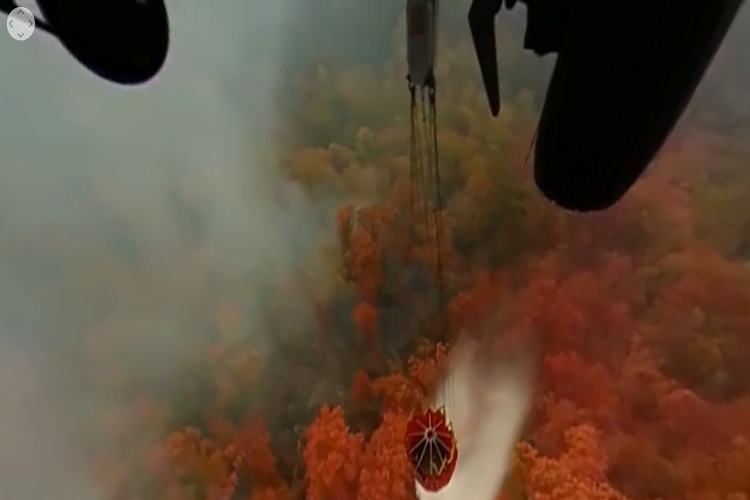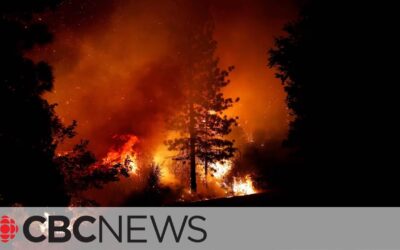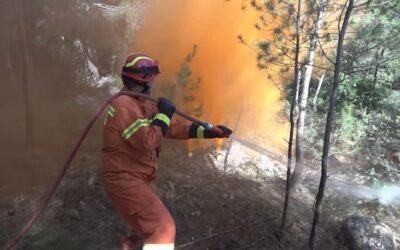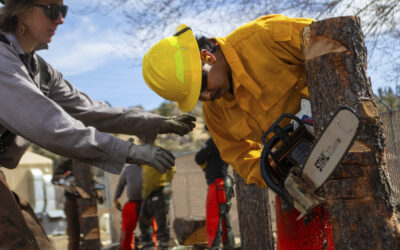You’re flying into places where you can barely see because of the smoke
STEVE AHILLEN, USA TODAY NETWORK
You’re piloting a Black Hawk helicopter through the smoke choking the sky over Gatlinburg, a city consumed in fire.
Your co-pilot sits beside you, squinting ahead, listening to communications, watching the instrument panels. Behind the co-pilot sits a Tennessee Division of Forestry officer who earlier instructed you on which fire to hit but is now looking out a small side window. In the back are two crew chiefs, their backsides planted on the bottom edges of open doors on either side of the helicopter. They are held in by harnesses as their legs dangle in open air. This is so they can look straight down at the 600-gallon water bucket hanging by a cable from the ‘copter. They are holding button devices; one will let loose water from the bucket when the time is right.
You’re all talking – constantly communicating through headsets not only with each other but also with other helicopters, air traffic controllers and, most importantly, a spotter on the ground. Talking and looking.
You are all not only searching for the assigned house fire but also the occasional telephone wire or tall tree that might snare the swaying bucket below.
Smoke makes visibility poor and the air stifling. You have little fans around the cockpit but they just blow in more smoke-filled air. Stress is also a big issue – just about as much stress as flying in a war zone. You’ve been at it for about seven hours and it’s nearing the end of your mandated eight-hour shift.
Suddenly, there before you is the target. The cabin home is going up in flames. You close in quickly. One crew chief in the back is preparing to press the button, when you realize to your horror that …
“There are people all over the house. A fire crew had shown up,” recalled Lt. Hulon Holmes with the Tennessee Army National Guard who was in just such a situation.
He knew that a person on the ground hit with that much water dumped from 100 feet would likely not survive. So, he pulled up and moved on.
Wildfire Flight, 360 Video, Phil Blakley
The crews based at McGhee Tyson Airport guard base went on fire missions for nearly two months around East Tennessee. The deadly Gatlinburg fire on Nov. 28 came at the end of a historically terrible season. The state Division of Forestry lists 1,445 fires occurring in the state in 2016, up more than 500 from the year before. The guard crews flew 25 missions accumulating 110.7 flight hours. They dumped 604 buckets holding a grand total of 431,100 gallons of water.
They used four of their 12 Black Hawks for most of it. These are the “slick” designed Black Hawks that are more suited for dealing with fires than the other Black Hawks that are designed for medical rescue missions. Holmes, who piloted helicopters through most of the fire season, said each aircraft had its own personality. “Some are pickier than others,” he said. “That one (he pointed to a helicopter at the base) was a problem child.
“Fighting fires is pretty stressful,” he said. “You are tense. A ‘copter does not fly very well (because of the 1,500-pound weight of a mostly filled water bucket). It flies like it’s drunk almost. You get that slow, little go-forward, pull-back. It’s almost like it starts to sway a little.
“You get a little tight, a little tense. You’re flying into places where you can barely see because of the smoke. You also have wires and trees to watch out for.”
Aerial and Ground Footage of the Tennessee Fires in Gatlinburg
https://youtu.be/9_vx0VEcBtc
It’s no wonder that firefighters, in general, consider helicopter pilots among the most fearless of a very fearless lot of emergency personnel.
They were usually called in on fires by state headquarters in Nashville this fall after requests from the state Division of Forestry when fires were judged to threaten structures.
“Trucks on the ground can usually put more water on a fire,” Holmes said, “but we have a unique capability to move from one side of a fire to another. What we are able to bring is we are able to move quickly as fire conditions change. It’s hard to maneuver that quickly on the ground.”
Helicopter pilots say every fire is different. The Signal Mountain fire near Chattanooga burned on the top and bottom of a cliff that made it just about impossible to put out. It burned for nearly a month. The Walland fire was on a mountain top with winds that kept shifting the fire and smoke from one side to the other. There were a few structures on top of Neddy Mountain near Newport and a C-130 tanker airplane was summoned from Chattanooga for dumping runs with 2,000 gallons of slurry each time.
“We just got taken off the Chattanooga fires and I was standing here (at the McGhee Tyson base) and looked out and saw the plume of smoke from the gap at Walland,” Holmes said. “Sure enough, the next day we were out there.”
And the Gatlinburg fire?
“It was different than all of the others,” said Sgt. Tracy Banta, who instructed all of the crew chiefs at McGhee Tyson and also flew on many of those fire missions. “We knew there were a lot of people down there, and a lot of firefighters.”
Blackhawk helicopter pulls water from lake to fight wildfires, Chattanooga Free Press
Until Gatlinburg, the helicopters were fighting fires back in unpopulated forests, usually dropping water along break lines cut with bulldozers or trying to form their own break lines with water to prevent fires from spreading.
“In Gatlinburg, we were putting out house and cabin fires,” Holmes said. “You don’t need to run a line. If you have a house or a porch on fire you have to concentrate on that spot. You have to slow down and maybe hover. When you slow down, your properties of the helicopter change. When moving through the sky the ‘copter blades are a lot like wings and they don’t take much power. But, when you hover it takes drastically more power to keep the ‘copter suspended above the ground.”
Holmes spoke of another situation in which he had to dump water on the burning deck of a home to keep the fire from spreading to the house. It involved coming closer to the ground and hitting the deck without wrecking the home.
Heat is also a problem.
“When you get into a real hot environment like that, it increases engine limitations,” Holmes said. “The engine can only get so hot. You’ll hit a limit where the helicopter won’t give you any more because the engine is too hot. It limits what you can do.”
Getting the water also is part of the challenge. In the Walland fire, there was debate about where to pick up water before the Little River next to Perry Mill Dam was selected even though it wasn’t quite deep enough. Eventually a small private lake was found that was better suited.
“Bucket is submerged. Bucket is filling. Bucket is full. I’m closing the valve,” said Holmes listing the protocol commands provided by crew chiefs to pilots.
Holmes said the bucket really must be totally submerged or else it will tip and lose half of its load when pulling out.
The buckets are more than 20 years old and sometimes act their age. A metal plug covers an opening on the bottom that can be raised or lowered to let water out.
“Sometimes you get a stuck plug that won’t open or won’t close,” Holmes said. “One got stuck on me, and I tried to hover and bang it off the ground a couple times. That didn’t work and we had to land and get it unstuck.”
During the many fires of the fall, helicopter crews fell into a routine.
“Every day it was like getting up and eating breakfast,” Banta said. “You didn’t know most times what fire you were going to. The conditions changed for each one, but we adapted.”
Holmes said at the end of the day, crews would often sit down to swap stories.
“A lot of guys shared what they did, their techniques, etc.” Holmes said. “There was even a little competition on who could run the most buckets.”
“We made 51 runs on a fire down in Chattanooga,” Banta said. “Our average turn was about 40 to 50 seconds.”
Once the season ended, Banta looked back with a sense of relief and pride.
“For us, the big concern is the crew we have. We want to make sure all those guys get back,” he said. There were no ‘copter crew injuries reported.
“These guys all did well,” he said. “For me to step back and let them do their business is a great reward. They take pride in what they do and are glad to do it.”
Copyright © 2017 LexisNexis, a division of Reed Elsevier Inc. All Rights Reserved.





